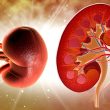This large registry has shown bicuspid aortic stenosis (AS) patients have similar mortality with transcatheter aortic valve replacement (TAVR) compared against surgical valve replacement (SAVR). TAVR outcomes in this population are not only similar to SAVR outcomes, but also to TAVR outcomes in patients with conventional aortic valve anatomy. Despite the good news, these outcomes...
Negative Impact of Pulmonary Hypertension in TAVR
Courtesy of Dr. Carlos Fava. The presence of pulmonary hypertension (PH) is frequent in severe aortic stenosis. This can be classified in: isolated pre-capillary PH, isolated post-capillary PH, and combined post-capillary and pre-capillary PH. At present, little research has looked into the disease from this perspective. The study looked at 1400 patients and divided them...
Meta-Analysis of Large TAVR Studies on Low-Risk: Evidence is Consistent
This meta-analysis which included the 4 large randomized studies on transcatheter aortic valve replacement (TAVR) vs surgical aortic valve replacement (SAVR) in low-risk patients recently published in JACC, showed TAVR is associated with significant lower mortality compared against SAVR at one year follow up. These results add to the mounting evidence showing that when it...
Trying to Reduce Post TAVR Kidney Injury
Acute kidney injury is a common complication after transcatheter aortic valve replacement (TAVR) and is associated to increased mortality both short and long-term. In patients undergoing percutaneous coronary intervention (PCI) forcing diuresis with controlled hydration has shown to reduce the incidence of acute kidney injury in nearly 50%. However, this has not been tested in...
TAVR Offers Better Quality of Life to Low Risk Patients
Courtesy of Dr. Carlos Fava. As we all know, TAVR is gaining ground fast in the lower risk patient population, but in addition to analyzing the most important events, researchers are increasingly looking at health status, not only at hospital level, but also after one year. This study looked into PARTNER 3 patient health status...
TCT 2019 | PCI in Stable CAD. Prior TAVR, with TAVR or Never?
Courtesy of SBHCI. This interesting study presented at TCT 2019 and simultaneously published in Am J Cardiol tells us PCI in stable coronary artery disease cannot lower risk in patients with severe aortic stenosis undergoing transcatheter aortic valve replacement (TAVR). Unless patients are symptomatic, most coronary artery lesions do not need revascularization according to researchers....
TCT 2019 | PARTNER 2A at 5 Years: In Intermediate-Risk Patients, TAVR Is Still Head-to-Head with Surgery
Courtesy of the SBHCI. The 2-year results of the PARTNER 2A trial showed that transcatheter aortic valve implantation has a result similar to that of surgery in patients with aortic stenosis and intermediate surgical risk. We lacked long-term data, both clinical and related to prosthesis function. Now, at TCT 2019, researchers presented the 5-year data for this...
Very Encouraging Results for TAVR in Low-Risk Patients
Courtesy of Dr. Carlos Fava. About 12% of patients >75 years old have aortic stenosis. In 3%-4% of them, such disease is severe. Transcatheter aortic valve replacement (TAVR) has already proven to be beneficial for extreme-, high-, and intermediate-risk patients. Regarding low-risk patients, we currently have different analyses; two of them are randomized and their results are...
TAVR and Pacemakers, New Strategies
Courtesy of Dr. Carlos Fava. TAVR has been shown beneficial and is constantly being advanced onto lower risk populations, but at present, it is limited (perhaps most importantly in aortic tricuspid valves) by the need for permanent pacemaker implantation (PPMI), especially when it comes to self-expandable valves, as the latest study on low risk populations...
TAVR in Bicuspid Has the Same Results in Surgery at Hospital Level
Courtesy of Dr. Carlos Fava. Bicuspid aortic stenosis patients (bicuspid AS) represent a small group and have not been included in the larger transcatheter aortic valve replacement (TAVR) studies, since they present different morphology and asymmetric calcification, which might come along with more paravalvular leak and less accurate positioning. Between 2012 and 2016, 475,315 patients...








